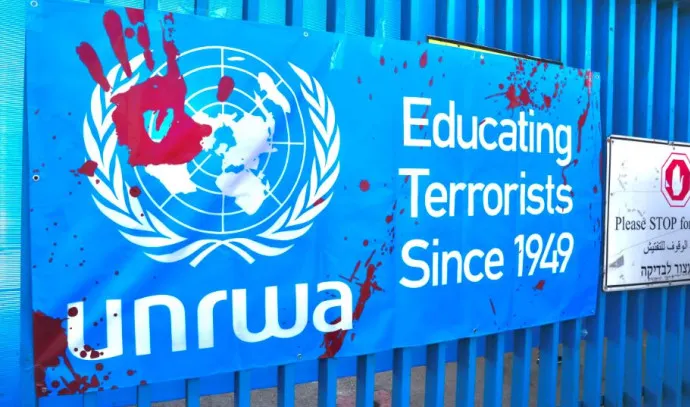Graham Adams
Graham Adams is a freelance editor, journalist and columnist. He lives on Auckland’s North Shore. This column was first published at The Common Room, commonroomnz.com
Even if Chris Hipkins is no longer the Prime Minister after October’s election, his legacy will be locked in for some time.
Chances are it won’t be on account of his role as Prime Minister over the next seven months — or his time as Minister of Police, Minister for Covid-19 Response, Minister for the Public Service, or his brief period as Minister of Health.
It will mainly be the result of his five years as Minister of Education.
Hipkins may, in fact, not even have been the principal architect of the stealthy revolution that has occurred on his watch but it will be seen as his legacy nevertheless because formal power over the education portfolio rested with him from 2017 until he became Prime Minister in January.
Over those years, Hipkins and his ministry have given the nation’s schoolchildren a radical (“decolonised”) history curriculum, which teachers throughout the country have begun implementing this term. “Aotearoa New Zealand’s Histories” is now compulsory for schools from Years 1-10, with the subject optional in Years 11-13.
It can perhaps be best summed up as a one-eyed ideological exercise in demonising Pakeha as oppressive colonisers and valorising Maori as valiant resisters.
Inconvenient historical facts are simply airbrushed out of existence. Despite the first of its four “Big Ideas” being articulated as “Maori history is the foundational and continuous history of Aotearoa New Zealand,” it fails to directly cover the Musket Wars that blighted the years between 1807 and 1837 as tribes relentlessly slaughtered each other.
One government history website estimates the total number of Maori deaths in this 30 Years War was higher than the tally of all New Zealanders killed in the First World War. Other estimates put the loss of Maori life as more than double the loss of life by New Zealanders in all wars since 1840. Yet the devastating effects of the enthusiasm Maori showed for obtaining and deploying muskets for inter-tribal colonisation is glossed over in the curriculum with only a few oblique references.
Given the curriculum’s pronounced ideological slant and avoidance of covering such major historical events, it was ironic that in May 2021 Hipkins defended it in Parliament as a warts-and-all exercise, stating: “I want to ensure that young people in New Zealand understand all of our history — the good, the bad, and the ugly.”
More than 4000 submissions on the draft curriculum — including by prominent historians, many of which were highly critical — were made to the Ministry of Education in 2021. Rather than publishing the submissions on its website the ministry had assessors summarise them and report back.
When I asked in February last year why the submissions hadn’t been made public, the ministry sidestepped the question and answered in fluent bureaucratese:
“Providing individual submissions outside of the detailed summaries would impair the efficient administration of the ministry.”
Consequently, the public could not tell how accurately the criticisms of the draft history curriculum had been reported, and the consultation was widely viewed as a sham. It was surmised that the ideologues at the Ministry of Education wanted to shield their project to create a black-armband history of colonial oppression from too much public criticism.
Last year Hipkins’ predecessor, Jacinda Ardern, described the reshaped curriculum as among her ”proudest achievements”. And when she was asked in Parliament in 2021 what “foundational change” looked like, and how it was different to the “transformational change” she had previously promised, she said she was “referring to a suite of policies — like the introduction of Matariki as a public holiday and the introduction of learning New Zealand history in schools that will make a long-term difference to how we see ourselves as a nation”.
She was obviously well aware that incorporating revolutionary ideology into education would be a significant part of her legacy — and that of her Minister of Education, Chris Hipkins.
Hipkins has been responsible for the disastrous centralisation of polytechnics and the first-year, fees-free university programme — which last week Times Higher Education pointed out had disproportionately benefited the wealthy — but the radical reshaping of school curriculums may be more enduring and difficult to unwind than these flawed programmes.
As teacher and principal Caleb Anderson put it:
“The Aotearoa NZ Histories document will be [this government’s] true legacy. As they are consigned to the opposition benches, as they soon will, the Left will console themselves that the seeds have been planted… in our institutions, in our schools, and in the minds of the most impressionable, and it is only a matter of time before they will get to water these seeds again. With the Left, it is always the long game that counts.”
And the radical policy prescriptions in education don’t stop with the history curriculum. That is just an early part of a “Curriculum Refresh” which will be implemented fully by 2026, with principals encouraged to begin sooner if they can.
In early February, Auckland University’s Professor Elizabeth Rata, whose particular expertise is in the sociology of education, sent an open letter to Hipkins — co-signed by three senior academics: Distinguished Professor Peter Schwerdtfeger, Dr Raymond Richards and Dr David Lillis — and copying in the new Minister of Education, Jan Tinetti.
Professor Rata and her colleagues asked that the Curriculum Refresh and the associated NCEA qualification reforms be halted. Their objections include traditional knowledge (matauranga Maori) being inserted everywhere in the curriculum and being given equivalence with modern knowledge, including science and maths; the division of students by race into Maori and non-Maori; and the creation of what they describe as a “racialised curriculum”.
The letter makes it clear that while matauranga Maori has its place in a school curriculum, it is not science:
“Traditional knowledge has its own value and purpose and belongs in curriculum subjects such as social studies, geography, and literature. But it is not science and does not belong in the science curriculum.”
Professor Rata draws particular attention to the concept of “mauri” (life force) being included in the NCEA Chemistry & Biology syllabus. “Vitalism, the idea of an innate ‘life force’ present in all things, has surfaced in many cultural knowledge systems, including European, but has been soundly refuted and is not part of modern science.”
Some of the proposals in the draft are so preposterous that it is shocking they found their way into any official document. What are we meant to make, for instance, of the “Purpose Statement for Mathematics and Statistics in the New Zealand Curriculum”, which states: “Being numerate in Aotearoa New Zealand today relies upon understanding diverse cultural perspectives and privileging te ao Maori and Pacific world-views”?
The fundamental problem at the core of the Curriculum Refresh is that it is based not on literacy or numeracy standards but primarily on race and identity.
Professor Rata summed up the situation to The Common Room:
“The nub of the issue is the erroneous belief that educational achievement and cultural identity go together.”
The basis for this overturning of New Zealand’s school syllabus comes from a hotly contested interpretation of the Treaty as an equal partnership between iwi and the Crown. As the letter puts it:
“Asserting that the Treaty of Waitangi is ‘a fundamental component of our constitution’, Te Mataiaho: the Curriculum Refresh’s radical goal is to ‘foster the next generation of Te Tiriti partners by moving beyond the rhetorical notion of ‘honouring’ Te Tiriti to giving effect to it.”
But, Professor Rata notes, “the status of the Treaty is subject to unresolved political contest. It is undemocratic to engineer a revolutionary constitutional change through the educational curriculum.
“We ask for the restoration of an academic curriculum and qualification system based on the democratic principles of universalism and secularism; a system that enabled generations of New Zealanders to acquire the universal knowledge of humanity.”
Since becoming Prime Minister, Hipkins has told us that the government has failed to explain co-governance adequately to the public, and a principal reason why the policy is so contentious is that it has been “misunderstood”.
Perhaps he could begin the new era of glasnost under his leadership by explaining exactly how partnership and co-governance work in the education portfolio he has just relinquished — and specifically in the makeover of the school curriculum.
The curriculum refresh makes it clear that what is taught will be decided in collaboration with local iwi. It recommends that, “Leading kaiako [teachers]… incorporate te reo Maori and matauranga Maori in the co-design of localised curriculum with whanau, hapu, and iwi.”
Co-designing a curriculum with Maori is, of course, an informal example of co-governance. Perhaps Hipkins could explain why “whanau, hapu, and iwi” should be involved — and especially what educational qualifications and experience they might be required to have to undertake such a prominent and important role.
It is always difficult to identify exactly who or what is the most-powerful force driving “partnership” and co-governance in legislation and policy under the Ardern-Hipkins government. In the case of education, is it primarily powerful bureaucrats in the Ministry of Education, the Minister of Education or the Maori caucus pulling the strings?
Kelvin Davis — who was Hipkins’ Associate Minister in the Education portfolio — seems keen to promote the idea that he and the Maori caucus are in the driver’s seat, with Hipkins as their docile passenger.
When Hipkins was sworn in as the nation’s 41st Prime Minister on January 25, Davis told Waatea News:
“I would say to him, ‘These are the things I want to do, I want to do this, I want to do that for Maoridom.’
“[Hipkins] would sit there pretty impassive, he’d pause for maybe a second and then go, ‘Yep, I’m into that, it’s a good idea.’ He would just back our Maori education things so I am confident Chris is going to be doing amazing things for Maoridom.”
Whether the “amazing things for Maoridom” turn out to be good for all the nation’s students — or even ultimately for Maori themselves — remains very much an open question.
Dr David Lillis’s assessment, however, is clear:
“The proposed curriculum is an indictment on government and the relevant institutions within our public service. It will cause severe damage for decades to come and must be fought with all of the might that the public of New Zealand can engender. The education of millions of students and the credibility of our education system are at stake.”
Professor Rata and her co-signees ended their letter with a plea:
“Prime Minister Hipkins, the Curriculum Refresh and the NCEA Reforms were developed on your watch as Minister of Education. It is, therefore, incumbent on you to repeal them before irrevocable damage is done to our country. As Prime Minister, you are certainly in a position to do so.”
Public criticism of partnership and co-governance imposed through legislation and policy has so far mostly focused on Three Waters. But once parents get a better grasp on what their children are being taught at school, Hipkins can expect another ferocious battle on that front too.









